|
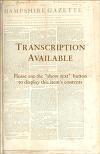
Letter from Shays' officers to John Brown of Whately published in Hampshire Gazette newspaper
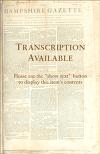
Hampshire Gazette newspaper article about organizing regiments
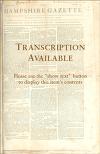
Letter from Daniel Shays printed in the Hampshire Gazette
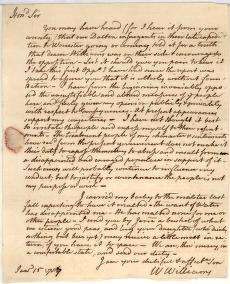
Letter to Israel Williams
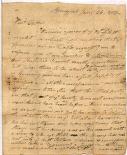
Letter to David Hoyt [Hoit] regarding Shays' Rebellion

Hampshire Gazette newspaper article on Shays' Rebellion
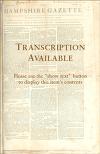
Letters to Capt. Shays and General Shepard published in the Hampshire Gazette

List of Colrain Insurgents
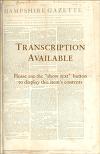
"Copy of a letter from Gen. Lincoln to Capt. Shays" in Hampshire Gazette newspaper
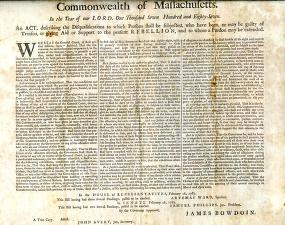
Disqualification Act broadside issued by Gov. James Bowdoin during Shays' Rebellion
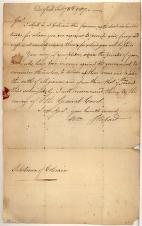
Letter to Colrain Selectmen regarding Insurgents
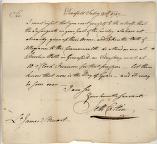
Letter to Lt. James Stewart regarding Insurgents
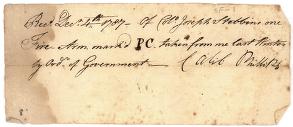
Receipt of Caleb Phillips
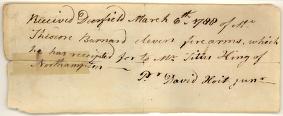
Receipt for firearms of Theodore Barnard
|
Summary and Objective
Students will understand that the people participating in Shays' Rebellion took great personal risk by reading various letters, newspaper articles, and receipts and discussing the possible losses that could and did occur for those fighting for rights that were ignored by the state. These readings show that many citizens of Massachusetts were against the rebellion and that those who rebelled could have lost not only their personal possessions, but also their rights as citizens of the United States .
Teaching Plan
Step 1.
Students will begin by reading the "Letter from Shays' Officers to John Brown" about organizing regiments. This article discusses assembling men to block the courts and help support the rights of the people. The reading demonstrates that the plans of Shays were not secret. Many of the men were outspoken and known to be a part of the plans to stop the government from unfair practices. Ask students whether or not they think organizing groups to block the courts from meeting was a way to protest or an act of war against the government.
Step 2.
Informally divide students into three groups and have each group read one of the following: Nov. 15, 1786 "Letter from Daniel Shays printed in the Hampshire Gazette" in which Shays wrote to the town of South Hadley requesting men, the Jan. 15, 1787 "Letter to Israel Williams", and the Jan. 26, 1787 "Letter to David Hoyt". Each of these examples show that many were against Shays and his actions. Towns and individuals wanted nothing to do with the rebellion which made this revolt more difficult and dangerous for Shays and his supporters. Have students describe in their own words why many people were hesitant (even afraid) to support Shays. What were some of the concerns?
Step 3.
Students then read the January 31, 1787 "Hampshire Gazette newspaper article on Shays' Rebellion" which comments on the risks Shays and his men were taking in hopes of gaining rights for the people. The newspaper is clearly against Shays and is influencing others to go against him. Have students note the towns Shays traveled through as well as the responses of the troops against these "regulators".
Step 4.
Have students discuss whether or not they think they would join with Shays. Generate a list on chart paper of the risks these men were taking. What would be reasons to fight with him? What would be reasons not to join? Is there more pressure from society to join Shays or to just accept the government's policies? This step will help the students organize the ideas derived from the previous readings.
Step 5.
Day 2 - Briefly review Shays' Rebellion at the Springfield Arsenol and its outcome. Read the Jan. 24, 1787 "Letters to Capt. Shays and General Shepard" which request bodies of fallen men, seek general pardon, and seek an end to fighing. The obvious risk of revolt, loss of life, has occured and those who have survived are now in danger of being held as criminals. Point out these consequences to the class. Ask them if they believe that Shays and his men committed a criminal act by attacking the Arsenol.
Step 6.
The following readings point out that many of Shays' group were known by name and would be given a chance for pardon. Briefly show the class the "List of Colrain Insurgents" and the the Jan. 31, 1787 "Copy of a letter from General Lincoln to Capt. Shays". Have students answer, "What is the threat made towards Shays' followers?"
Step 7.
Students read more letters pressuring Shays and his men to yield to the government. These explain the provisions for pardon. Again give each of the three informal groups a reading: the "Disqualification Act broadside issued by Gov. James Bowdoin during Shays' Rebellion" (Feb. 16, 1787), the Feb. 11, 1788 "Letter to Colrain Selectman regarding insurgents", and the Feb. 20, 1787 "Letter to Lt. James Stewart regarding insurgents". Have students discuss the terms of being pardoned and what life might be like for Shays' men if they agreed to the provisions or if they refused.
Step 8.
Lastly, show students briefly "Receipt of Caleb Phillips", "Receipt for firearms of Theordore Barnard", and the "Oath of Allegiance of Isaac Abercrombie" showing that these men did have to give up personal property and certain rights for a period of time in order to be pardoned. Have students discuss (or assign as homework) how life might have changed for these individuals after the Rebellion ended and after they were eventually granted pardons. Was all well for them? Were their actions worth the personal risks they took?
|




